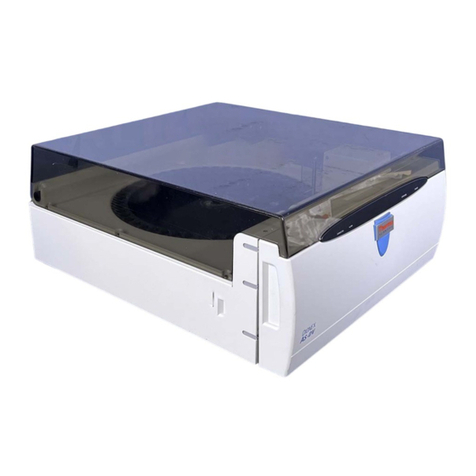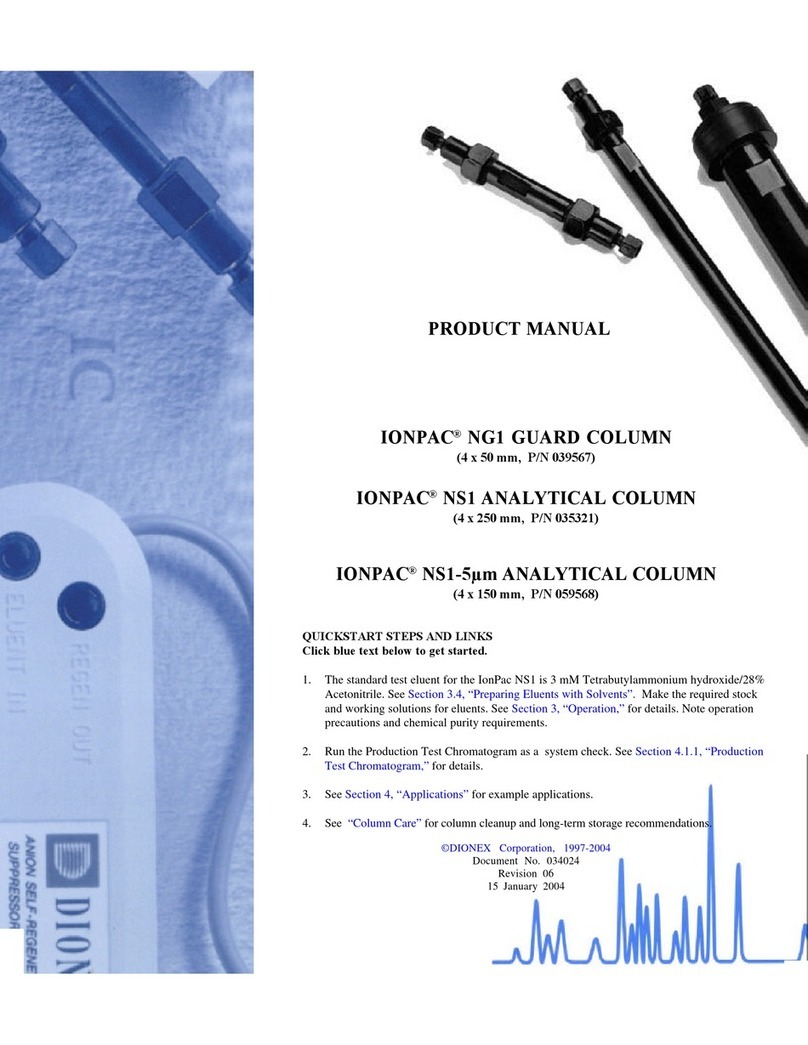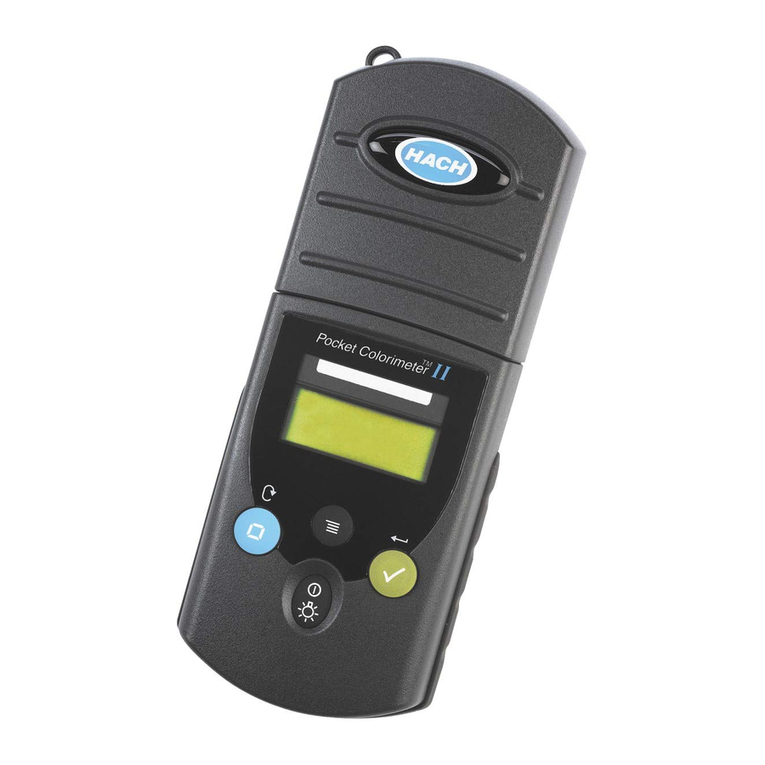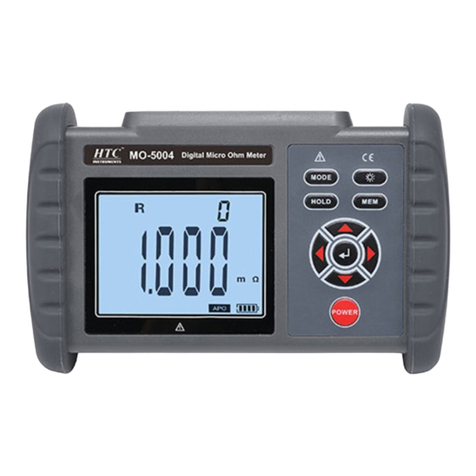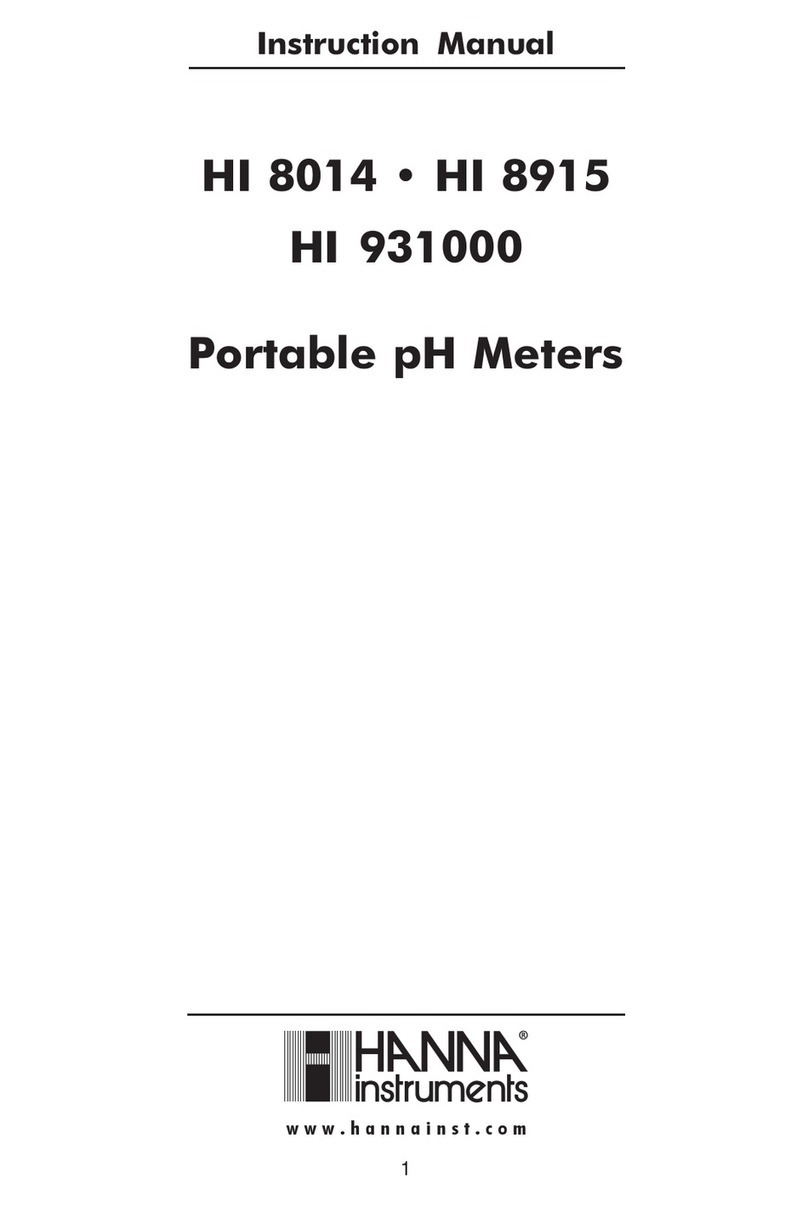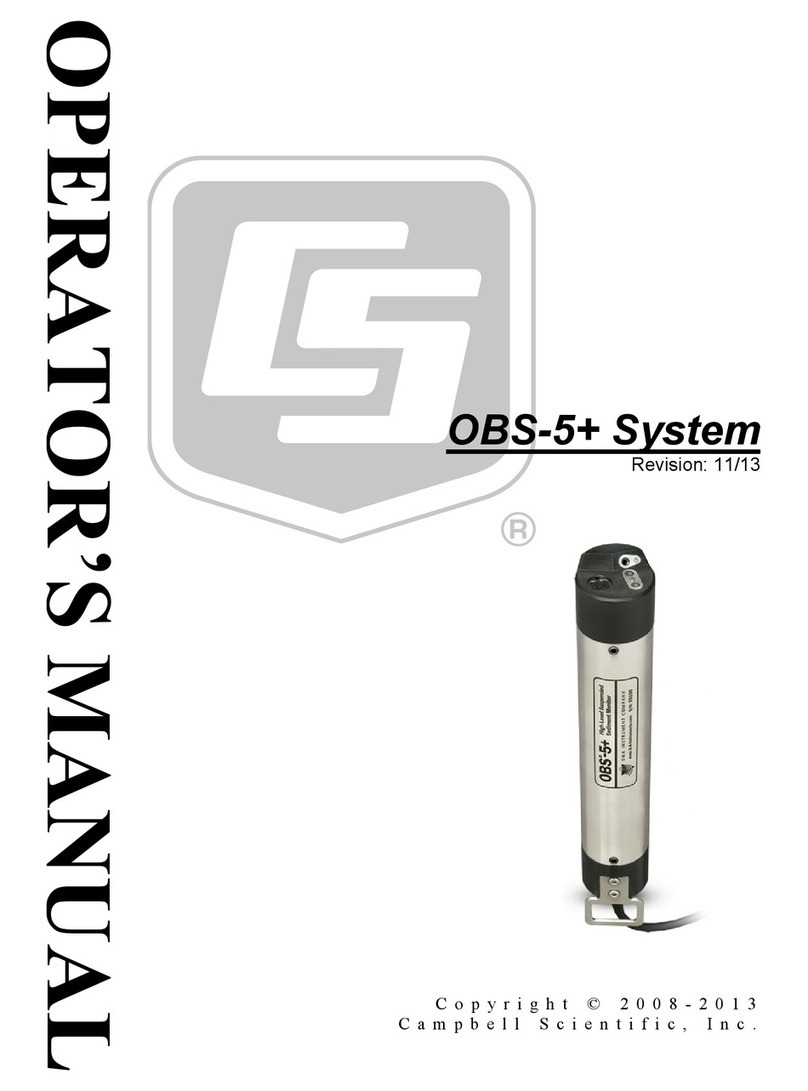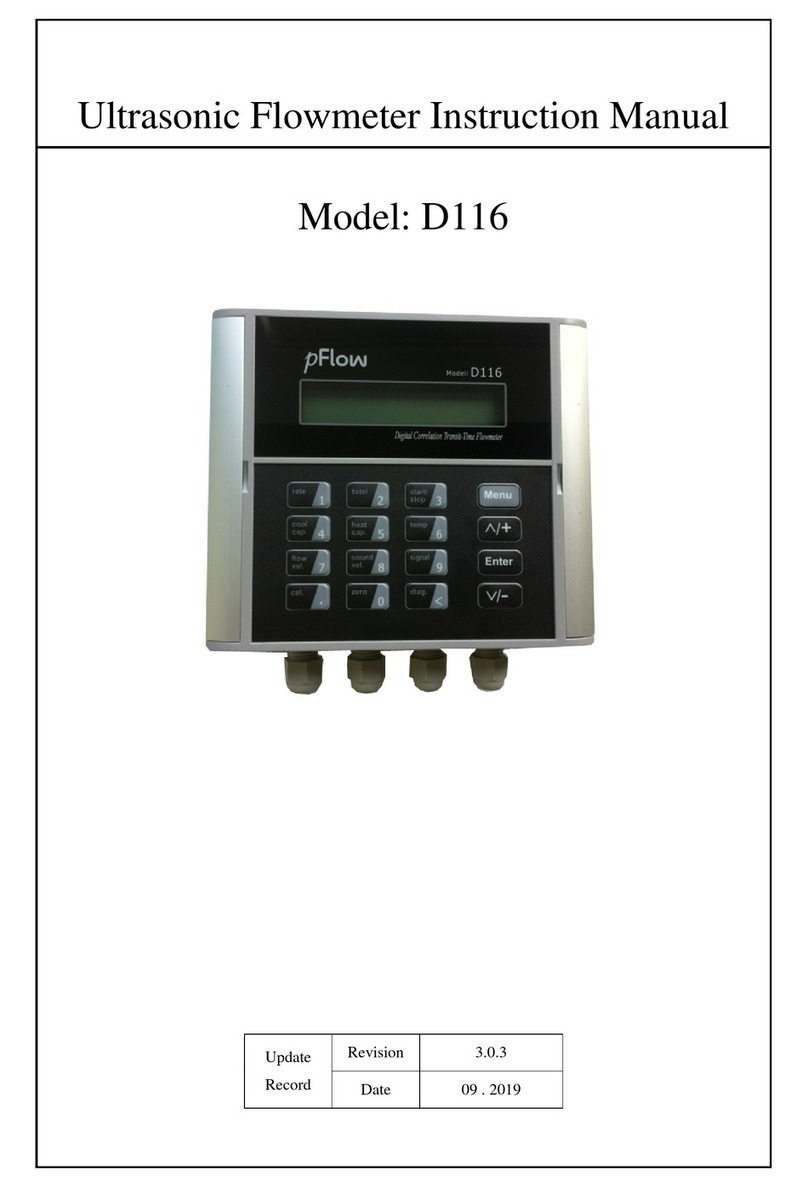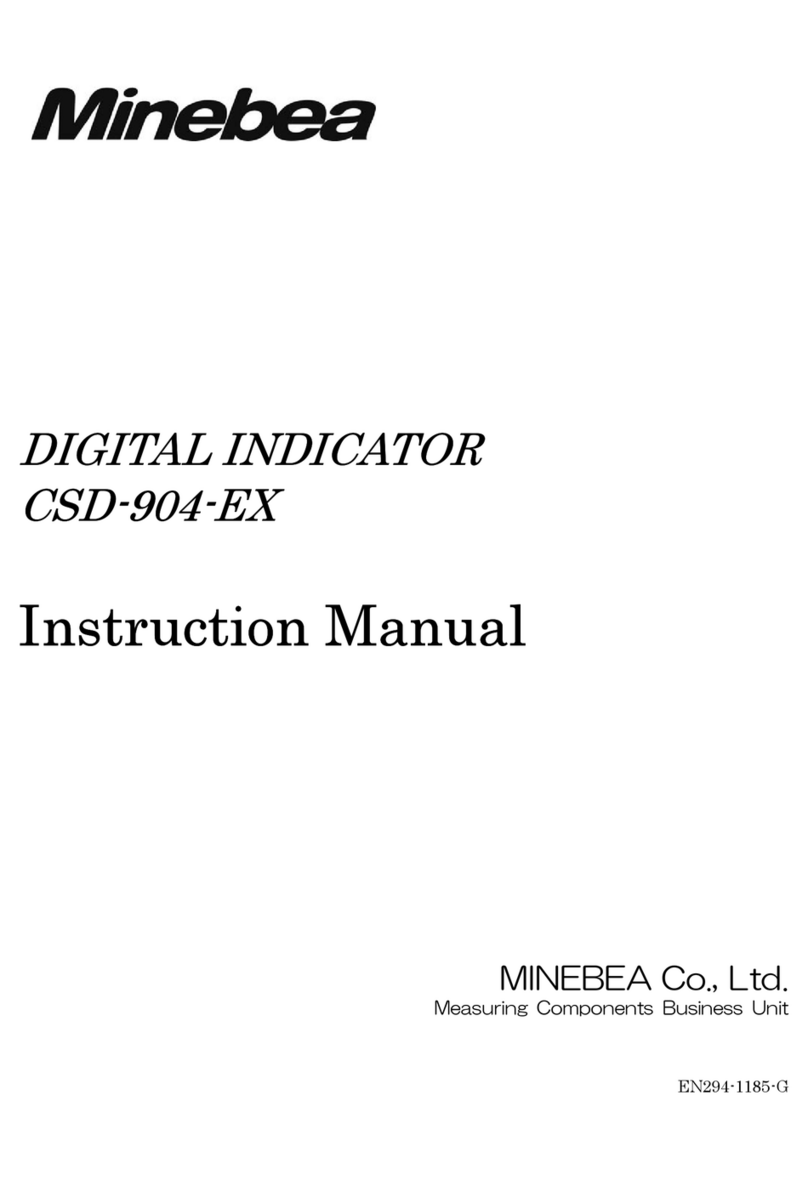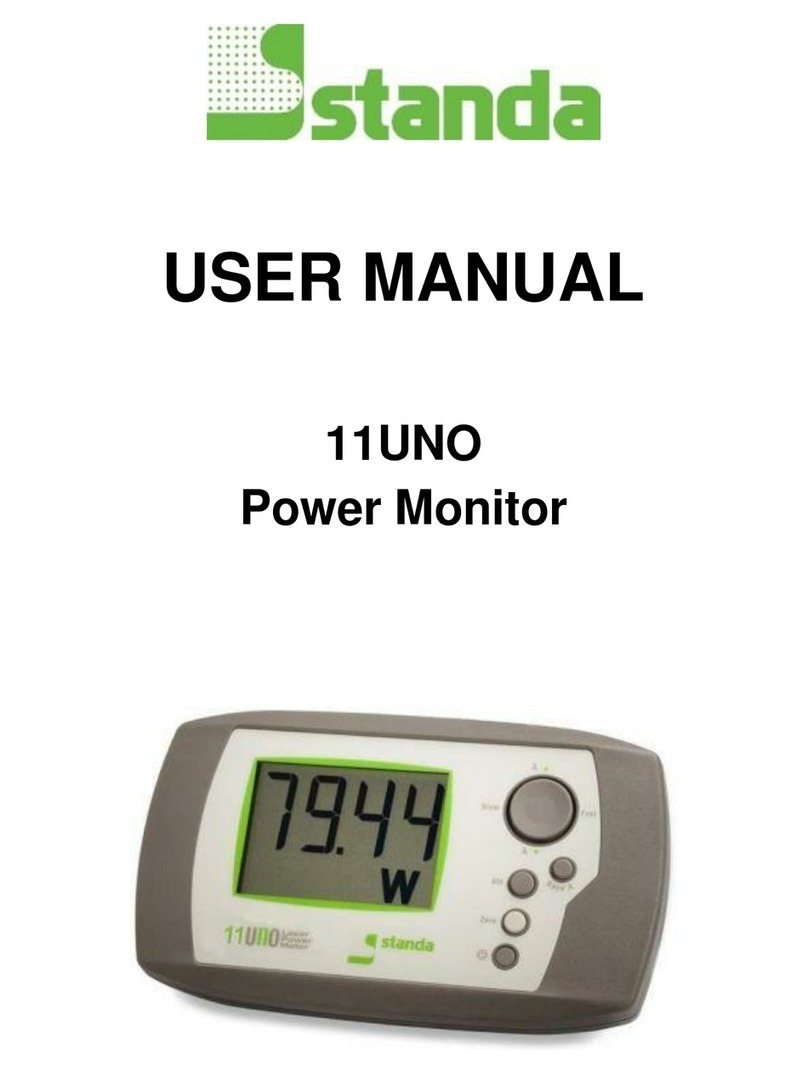Dionex IonPac TCC Series User manual

IonPac®TCC

IonPac TCC-LP1, TCC-ULP1, and TCC-XLP1
Product Manual Page 1 of 17
Doc. No. 034973-06 ©2005 DIONEX September 2005
PRODUCT MANUAL
FOR
TRACE CATION CONCENTRATOR
(TCC)
TCC-LP1 Column – Low Pressure, 4 x 35 mm (P/N 063079)
TCC -ULP1 Column – Ultra Low Pressure, 5 x 23 mm (P/N 063783)
TCC -XLP1 Column – Extremely Low Pressure, 6 x 16 mm (P/N 063889)
Dionex
®
Corporation, 2005
Document No. 034973
Revision 06
September 2005

IonPac TCC-LP1, TCC-ULP1, and TCC-XLP1
Product Manual Page 2 of 17
Doc. No. 034973-06 ©2005 DIONEX September 2005
TABLE OF CONTENTS
1. INTRODUCTION.......................................................................................................................................................4
2. INSTALLATION ........................................................................................................................................................6
2.1. TCC Operation Precautions.........................................................................................................................6
2.2. Column Description......................................................................................................................................6
3. OPERATION...............................................................................................................................................................7
3.1. Sample Loading.............................................................................................................................................7
3.2. Reagent and Sample Handling.....................................................................................................................9
3.3. Concentrator Capacity ...............................................................................................................................10
4. EXAMPLE APPLICATIONS..................................................................................................................................13
4.1. Concentration in the Manual Mode...........................................................................................................13
4.2. Concentration in the Manual Mode...........................................................................................................14
5. TROUBLESHOOTING GUIDE..............................................................................................................................15
5.1. High Backpressure from a Contaminated Inlet Bed Support.................................................................15
5.2. High Background, Noise, or Baseline Instability......................................................................................16
5.3. Poor Peak Shape..........................................................................................................................................16
APPENDIX A...........................................................................................................................................................................17
A.1 Recommended Operating Pressures.................................................................................................................17
A.2 Column Start-up.................................................................................................................................................17
A.3 Column Storage ..................................................................................................................................................17
A.4 Column Cleanup of Polyvalent Cations and Acid-soluble Contaminants.....................................................17
A.5 Column Cleanup Of Organic/Cationic Contaminants....................................................................................17

IonPac TCC-LP1, TCC-ULP1, and TCC-XLP1
Product Manual Page 3 of 17
Doc. No. 034973-06 ©2005 DIONEX September 2005
IMPORTANT INFORMATION
Several icons are used throughout this document to emphasize important points. The symbols are shown below, along with
the purpose of the information.
SAFETY
Safety information can help prevent bodily harm.
WARNING
Warning information can help prevent equipment harm.
CAUTION
Caution information can help prevent problems.
NOTE
Note information can help with tips for improved use.

IonPac TCC-LP1, TCC-ULP1, and TCC-XLP1
Product Manual Page 4 of 17
Doc. No. 034973-06 ©2005 DIONEX September 2005
1. INTRODUCTION
The IonPac® Trace Cation Concentrator Low Pressure (TCC-LP1, P/N 046027), Ultra Low Pressure (TCC-ULP1, P/N
063783), and Extremely Low Pressure (TCC-XLP1, P/N 063889) Columns are designed primarily for high purity water
analysis. The function of the columns is to strip ions from a measured volume of a relatively clean aqueous sample matrix.
This process “concentrates” the desired analyte species onto the columns leading to a lowering of detection limits by 2-5
orders of magnitude. The unique advantage of the columns to the analytical chemist is the capability of performing routine
Low Pressure, Ultra Low Pressure, and Extremely Low Pressure Trace analyses of sample matrix ions at µg/L levels without
extensive and laborious sample pretreatment.
The TCC-LP1, TCC-ULP1, and TCC-XLP1 columns are packed with a 20 µm styrene/divinylbenzene copolymer that is
grafted to yield a resin with carboxylate functional groups. Due to its highly cross-linked structure, the resin is solvent
compatible. The capacity of the TCC-LP1, TCC-ULP1, and TCC-XLP1 is 260 µeq/column with a void volume of
approximately 250 µL. The physical rigidity of this resin allows the TCC-LP1, TCC-ULP1, and TCC-XLP1 to be used at
pressures up to 3,000 psi (20.68 MPa). The TCC-LP1, TCC-ULP1, and TCC-XLP1 can be readily converted between the
acid and the salt form without significant changes in the operating pressure.
The recommended maximum flow rate is 5 mL/min. The back pressure generated by the TCC-LP1 is less than 70 psi (0.48
MPa) at 1 mL/min, the TCC-ULP1 is less than 45 psi (0.31 MPa) at 1 mL/min, and the TCC-XLP1 is less than 30 psi (0.21
MPa) at 1 mL/min. The large resin particle size (20 µm) in the TCC-LP1, TCC-ULP1, and TCC-XLP1 makes it possible to
do manual injections onto the concentrator. Syringes with up to 3 mL capacities can be used to manually push samples
through the TCC-LP1. It takes approximately 1 minute to manually push 3 mL of sample through the TCC-LP1, TCC-ULP1,
and TCC-XLP1 columns.
The TCC-LP1, TCC-ULP1, and TCC-XLP1 columns can be used with methanesulfonic acid, sulfuric acid, and hydrochloric
acid eluents, with or without solvent, to concentrate samples on 5-mm, 4-mm, 3-mm, or 2-mm analytical systems.
This manual assumes that you are familiar with the installation and operation of the DIONEX Ion Chromatograph (IC) and
the suppressor. If you do not understand the operation of the system, take the time to familiarize yourself with the various
system components before beginning an analysis. The TCC-LP1, TCC-ULP1, and TCC-XLP1 have 10-32 threaded PEEK
end fittings for use with ferrule/bolt liquid line fittings. If you find it necessary to install a component with 1/4-28 ports and
therefore need to obtain or make one or more transition lines between 10-32 and 1/4-28 threaded ThermoFlare ports,
DIONEX recommends the use of Tefzel® liquid lines with a PEEK ferrule/bolt fitting on one end and a 1/4-28 ThermoFlare
fitting on the other end. See, “DIONEX Liquid Line Fittings,” for detailed instructions on purchasing or making these lines.
Assistance is available for any problem during the shipment or operation of Dionex instrumentation, columns, and
consumables through the Dionex North America Technical Call Center at 1-800-DIONEX-0 (1-800-346-6390) or
through any of the Dionex Offices listed in “Dionex Worldwide Offices” on the Dionex Reference Library CD-ROM.

IonPac TCC-LP1, TCC-ULP1, and TCC-XLP1
Product Manual Page 5 of 17
Doc. No. 034973-06 ©2005 DIONEX September 2005
TABLE 1
IonPac TCC-LP1, TCC-ULP1, and TCC-XLP1 Concentrator Column Packing Specifications
Column Particle
Diameter Substrate
X-Linking Column
Capacity Functional
Group Hydro-
phobicity
TCC-LP1
4-mm 20 55 260 µeq/col
Carboxylic
Acid Very low
TCC-ULP1
5-mm 20 55 260 µeq/col
Carboxylic
Acid Very low
TCC-XLP1
6-mm 20 55 260 µeq/col
Carboxylic
Acid Very low
TABLE 2
IonPac TCC-LP1, TCC-ULP1, and TCC-XLP1 Concentrator Column Operating Parameters
Column Typical Backpressure
MPa at 30 ºC Standard Flow Rate
mL/min Maximum Flow Rate
mL/min
TCC-LP1
4-mm < 70 (0.48) 0.50 5.0
TCC-ULP1
5-mm < 45 (0.31) 0.50 5.0
TCC-XLP1
6-mm < 30 (0.21) 0.50 5.0

IonPac TCC-LP1, TCC-ULP1, and TCC-XLP1
Product Manual Page 6 of 17
Doc. No. 034973-06 ©2005 DIONEX September 2005
2. INSTALLATION
2.1. TCC Operation Precautions
CAUTION
The columns are shipped with 2.5 mM methanesulfonic acid as the storage solution. Flush the
column for 30 minutes with eluent before attempting to concentrate sample. Pump the effluent
directly to a waste container while washing the column. DO NOT pump this effluent through the
guard column, analytical column and/or the suppressor.
2.2. Column Description
The IonPac Trace Cation Concentrator - Low Pressure (TCC-LP1, 4x35 mm) and IonPac Trace Cation Concentrator – Ultra
Low Pressure (TCC-ULP1, 5x23 mm) columns consist of the following components.
1. Bed Support Assembly (P/N 042955)
2. 10-32 Ferrule Column End Fitting (P/N 052809)
3. 10-32 Ferrule Plug (P/N 042772)
FIGURE 1
TCC-LP1, TCC-ULP1 Column Components
The IonPac Trace Cation Concentrator – Extremely Low Pressure (TCC-XLP1, 6x16 mm) column consists of the following
components.
1. 10-32 Ferrule Plug (P/N 042772)
2. Column Body 6 x 16 mm (P/N 063561)
3. Bed Support (Frit) (P/N 063606)
4. Bed Support Assembly (P/N 063688)
5. 9-mm Column End Fitting (P/N 048298)
FIGURE 2
TCC-XLP1 Column Components
5
1
4 1
2
3

IonPac TCC-LP1, TCC-ULP1, and TCC-XLP1
Product Manual Page 7 of 17
Doc. No. 034973-06 ©2005 DIONEX September 2005
3. OPERATION
3.1. Sample Loading
WARNING
Always use the high pressure pulse damper (Dionex P/N 043945) after the DQP pump or DXP pump
to ensure the concentrator column does not get exposed to pump pulsations. It is possible to damage
the resin when exposed to high pump pulsations.
WARNING
To prevent overloading the TCC-LP1, TCC-ULP1, or TCC-XLP1, and/or loss of sample analytes,
determine the concentration linearity over the desired analytical concentration range. See Section
3.4.1, “Capacity Consideration of Concentrators.”
Sample loading can be performed manually with a < 3 mL syringe. It takes approximately 1 minute to manually inject 3 mL
of sample through the TCC-LP1.
Alternately, you can use a separate positive displacement pump such as the Dionex DQP pump (P/N 035250). When using a
pump, ensure that a high pressure damper is used. Pump flow rates of approximately 3 mL/min can be used while
maintaining sample concentration efficiencies high enough to ensure good quantification.
WARNING
The flow direction during the concentration step is critical. In order to ensure optimal system
performance, it is recommended that concentration always be performed in a back flush manner.
After the sample has been loaded onto the TCC-LP1, TCC-ULP1, or TCC-XLP1 in the direction opposite to the eluent flow,
it is then “back flushed” with eluent onto the guard and analytical columns (see Figure 4, “Loading the TCC-LP1, TCC-
ULP1, or TCC-XLP1 Column”). This configuration concentrates the cations in a tight band at the bottom of the TCC
columns. When injected, all of the ions are rapidly eluted off of the TCC columns, and onto the guard and analytical
columns. If the sample is loaded onto the TCC-LP1, TCC-ULP1, or TCC-XLP1 in the same flow direction as the eluent
flow, the cations are concentrated at the head of the column rather than at the bottom. When injected, the cations begin
chromatographic separation on the concentrator before reaching the guard and analytical columns. Therefore, the retention
time of the analytes would be significantly longer than a standard loop injection. Normally the function of the concentrator is
to strip the ions of interest from the sample matrix and not to act as an analytical column.

IonPac TCC-LP1, TCC-ULP1, and TCC-XLP1
Product Manual Page 8 of 17
Doc. No. 034973-06 ©2005 DIONEX September 2005
Figure 3 shows the configuration for sample loading using a Rheodyne valve.
FIGURE 3
Configuration for Determining Trace Levels of Cations
Figure 4 shows the configuration for sample loading using a slider valve.
FIGURE 4
Loading the TCC-LP1, TCC-ULP1, or TCC-XLP1 Column

IonPac TCC-LP1, TCC-ULP1, and TCC-XLP1
Product Manual Page 9 of 17
Doc. No. 034973-06 ©2005 DIONEX September 2005
3.2. Reagent and Sample Handling
The use of the TCC-LP1, TCC-ULP1, or TCC-XLP1 column has certain limitations. At trace analyte concentration levels
(µg/L), the results of the analysis depend on carefully following good laboratory practices. All sources of contamination
must be eliminated. The following sections focus on critical points that must be observed when using the TCC-LP1, TCC-
ULP1, or TCC-XLP1 concentrator columns. Proper consideration of these points will enable the analyst to obtain accurate
and reproducible results at trace analyte levels.
3.2.1.1. Water Quality
All water used in the preparation of standards and eluents must be deionized water with a specific resistance of 18.2
megohm-cm. The quality of the dilution water must be determined by Ion Chromatography since even deionized water with
a specific resistance of 18.2 megohm-cm may contain trace levels of the ions of interest. To do this, analyze the water in
exactly the same manner as your sample.
3.2.1.2. Sample Collection and Storage
CAUTION
Never use plastic syringes with rubber pistons for any loading of trace ions. These materials cause
non-reproducible results.
At trace analyte concentration levels (µg/L), chances of contamination during collection or storage are high. Every
container and every procedural step constitutes a potential source of contamination. Polystyrene containers with
leak-tight caps can be used to store 1 to 5 µg/L levels of inorganic and organic cations for up to 8 days.
Recommended storage vessels are Corning tissue culture flasks. The following procedure should be used for storage
of µg/L level samples.
A. Rinse the polystyrene container and cap twice with deionized water having a specific resistance of 18.2 megohm-
cm. Fill the container until it overflows, cap it securely, and soak for 4 hours.
B. Empty the container and refill it with deionized water having a specific resistance of 18.2 megohm-cm. Cap the
container securely. It should remain filled at least 24 hours before sample collection.
C. Empty the container and rinse it twice with the sample to be collected. Fill the container with the sample until it
overflows and then cap the container securely. Be sure that the sample line does not touch the container.
3.2.1.3. Standards
It is good practice to run standards at the beginning, middle, and end of each day to ensure constant instrument
response. Because external standard quantification is used, it is critical that standard solutions are correctly
prepared.
A. 1,000 mg/L (1 mg/L = 1 ppm) stock standard solutions should be prepared by accurately weighing amounts of salts
as described in your instrument manual. These solutions are stable over a period of several months.
B. 1 mg/L stock standard solutions may be prepared by diluting 1 mL of 1,000 mg/L stock standard to 1,000 mL in a
volumetric flask. These solutions should then be transferred to clean polystyrene containers. They may be stored
for up to one month.
C. 1 µg/L working standard solutions may be prepared by diluting 1 mL of the 1 mg/L stock standard to 1,000 mL.
These working standards are stored in polystyrene containers. They are stable up to 8 days, but Dionex recommends
daily preparation since standard response is critical in the results of your analysis.

IonPac TCC-LP1, TCC-ULP1, and TCC-XLP1
Product Manual Page 10 of 17
Doc. No. 034973-06 ©2005 DIONEX September 2005
3.3. Concentrator Capacity
3.3.1.1. Capacity Considerations for Concentrators
As in all ion exchange systems, the resin has a finite capacity. It can strip a given amount of ions from water. When the
capacity of the concentrator is exceeded, the stripping will not be quantitative. This condition is referred to as column
overload.
When estimating the capacity of a concentrator, one must remember that the column is used in a dynamic state where the
liquid containing the analytes is flowing over the resin at a finite rate. This reduces the capacity somewhat since the analyte
ions have less time to interact with the resin surface.
Low concentrator column capacity creates the following practical implications:
A. Trace analysis of an analyte is difficult in the presence of µg/L concentrations of species which exhibit higher or
similar affinities for the resin. If the dynamic column capacity is exceeded, high affinity ions will displace the
analytes on the ion exchange sites and result in their elution to waste during the loading process.
B. Conversely, qualitative analysis of ions with higher affinities for the resin in the presence of high concentrations of
ions with low affinities is possible. Again, the key to successful analysis is that the ionic content of the high affinity
ion to be quantitated may not exceed the effective column capacity.
C. Do not dilute samples to be concentrated in eluent because the eluent ions elute the ions of interest.
D. A plot of response versus concentration should be generated as in Figure 5, “Linearity of Lithium Concentrator
Injection,” for the determination of the maximum amount of sample or standard that can be quantitatively loaded. In
Figure 4, “Linearity of Lithium Concentrator Injection,” the break in the curve where linearity starts to change is at a
concentration volume of 1 mL of 250 µg/L lithium. For practical purposes the amount concentrated for a series of
samples should be 75% of this value. This will ensure that there is a safety margin built into the concentration
process in case a sample in a series of concentration experiments has a slightly higher ionic concentration.
FIGURE 5
Linearity of Lithium Concentrator Injection

IonPac TCC-LP1, TCC-ULP1, and TCC-XLP1
Product Manual Page 11 of 17
Doc. No. 034973-06 ©2005 DIONEX September 2005
3.3.1.2. Determination of the Concentrator Column Breakthrough Volume
The breakthrough volume of an analyte ion is that volume of sample which causes an ion of interest to be eluted from, rather
than retained or concentrated on, the concentrator column.
The breakthrough volume for a concentrator column is usually defined as the volume of sample necessary to elute the most
weakly retained ions of interest in the sample. The more strongly retained ions in the sample, such as NH
4+
, can elute the
more weakly retained ions in the sample, such as Li
+
.
It is also possible for a high concentration of a weakly retained ion such as Li
+
to elute a more strongly retained ion present at
low concentration. This can occur if one is attempting to concentrate trace ions in a concentrated matrix.
The breakthrough is dependent upon several factors.
A. The volume of sample loaded.
B. The rate at which the sample is loaded.
C. The pH of the sample.
D. The ionic strength of the sample.
E. The amount and capacity of resin in the column.
The breakthrough volume is determined as follows.
A. Prepare 1 L of a solution that closely simulates the type of sample to be analyzed. For example, if the sample
contains high levels of NH
4+
, the simulated sample should also contain NH
4+
. The ammonium ion will act as an
eluent (E2).
B. Prepare a 1 mg/L standard of the first eluting ion of interest (e.g., Li
+
).
C. Set up the Ion Chromatograph, as shown in Figure 6, “Linearity Determinations for Concentrator Injection.”
D. Equilibrate the TCC-LP1, TCC-ULP1, or TCC-XLP1 with the eluent (E1) to be used in the analysis. Set the flow
rate necessary to achieve a stable baseline and wash the column in this manner for at least 10 minutes.
E. Switch to the simulated sample as an eluent (E2). Without delay, manually inject 50 µL of the 1 mg/L standard.
F. Record the resulting chromatogram and calculate the breakthrough volume, as shown in Figure 7, “Typical Data
Obtained in the Determination of the Breakthrough Volume.”
G. For practical purposes, the volume concentrated should be below 75% of the breakthrough volume.

IonPac TCC-LP1, TCC-ULP1, and TCC-XLP1
Product Manual Page 12 of 17
Doc. No. 034973-06 ©2005 DIONEX September 2005
FIGURE 6
Linearity Determinations for Concentrator Injection
Time (min) that the simulated sample is pumped through the TCC-LP1, TCC-ULP1, or TCC-XLP1
after the single ion injection
FIGURE 7
Typical Data Obtained in the Determination of the Breakthrough Volume

IonPac TCC-LP1, TCC-ULP1, and TCC-XLP1
Product Manual Page 13 of 17
Doc. No. 034973-06 ©2005 DIONEX September 2005
4. EXAMPLE APPLICATIONS
4.1. Concentration in the Manual Mode
The following example demonstrates the advantages of sample concentration with low sensitivity detection versus
direct injection with high sensitivity detection.
Sample Loop Volume: See Chromatogram
Concentrator Column: TCC-ULP1 5 x 23mm
Analytical Column: IonPac CG12, CS12 4mm Analytical Column
Eluent: 25 mM Methanesulfonic acid
Eluent Flow Rate: 1.0 mL/min
Injection Volume: 1.0 mL
Temperature: 35 °C
SRS Suppressor: Cation Self-Regenerating Suppressor, CSRS
®
-ULTRA
AutoSuppression
™
Recycle Mode
MMS Regenerant: 100 mN TBAOH (Use Dionex Cation Regenerant Solution P/N 039602)
The following example demonstrates the advantages of sample concentration with low sensitivity detection versus direct
injection with high sensitivity detection.
Peaks µg/L (ppb)
1. Lithium 4.6
2. Sodium 18.2
3. Ammonium 36.5
4. Potassium 18.2
5. Magnesium 18.2
6. Calcium 91.2
2.00
3.00
4.00
5.00
6.00
7.00
8.00
9.00
9.5
0
0
.50
1
.00
2
.00
3
.00
4
.00 µS
min
1
2
3
4
5
6
FIGURE 8
Manual Concentration on TCC-ULP1 versus Direct Injection

IonPac TCC-LP1, TCC-ULP1, and TCC-XLP1
Product Manual Page 14 of 17
Doc. No. 034973-06 ©2005 DIONEX September 2005
4.2. Concentration in the Manual Mode
The following example demonstrates the advantages of sample concentration with low sensitivity detection versus
direct injection with high sensitivity detection.
Sample Loop Volume: See Chromatogram
Concentrator Column: TCC-LP1 4 x 35mm
Analytical Column: IonPac CS14 Analytical Column
Eluent: 10 mM Methanesulfonic acid
Eluent Flow Rate: 1.0 mL/min
Injection Volume: 1.0 mL
SRS Suppressor: Cation Self-Regenerating Suppressor, CSRS
®
-ULTRA
AutoSuppression
™
Recycle Mode
or AES Suppressor Cation Atlas
®
Electrolytic Suppressor, CAES
or MMS Suppressor Cation MicroMembrane Suppressor, CMMS
®
III
MMS Regenerant: 100 mN TBAOH (Use Dionex Cation Regenerant Solution P/N 039602)
Expected Background Conductivity: < 2 µS
Expected System Operating Back Pressure: < 1,300 psi (8.96 MPa)
Peaks µg/L (ppb)
1. Lithium 0.5
2. Sodium 2.0
3. Ammonium 2.5
4. Potassium 5.0
5. Magnesium 2.5
6. Calcium 5.0
FIGURE 9
Manual Concentration versus Direct Injection

IonPac TCC-LP1, TCC-ULP1, and TCC-XLP1
Product Manual Page 15 of 17
Doc. No. 034973-06 ©2005 DIONEX September 2005
5. TROUBLESHOOTING GUIDE
The purpose of the Troubleshooting Guide is to help you solve operating problems that may arise while using the TCC-LP1,
TCC-ULP1, and TCC-XLP1 columns. For more information on problems that originate with the Ion Chromatograph, refer to
the Troubleshooting Guide in the appropriate operator’s manual. If you cannot solve the problem on your own, call your
nearest Dionex Regional Office (see, “Dionex Worldwide Offices” on the Dionex Reference Library CD-ROM).
5.1. High Backpressure from a Contaminated Inlet Bed Support
If the TCC-LP1, TCC-ULP1, or TCC-XLP1 column displays high backpressure, the bed support in the column inlet may be
contaminated. A contaminated bed support may also lead to loss of peak asymmetry.
WARNING
For proper operation in the SP10 Auto Neutralizer, the TCC columns should generate no more than
70 psi of backpressure at a flow rate of 0.5 mL/min.
WARNING
If any of the column packing becomes lodged between the end of the column and the bed support
washer assembly, no amount of tightening will seal the column. Be sure that the washer and the end
of the column are clean before screwing the end fitting back on to the column.
Follow the instructions below to change the bed support assembly using one of the two spare bed support assemblies
included in the ship kit provided with the column.
A. Disconnect the column from the system.
B. Using two open-end wrenches, carefully unscrew the inlet (top) column end fitting.
C. Turn the end fitting over and tap it against a bench top or other hard, flat surface to remove the bed support and
seal assembly. If the bed support must be pried out of the end fitting, use a sharp pointed object such as a pair
of tweezers, but be careful that you DO NOT SCRATCH THE WALLS OF THE END FITTING. Discard the
old assembly.
D. Place a new bed support assembly in the end fitting. Before assembling, clean the column body threads and the
end fitting threads of any resin particles. If any resin remains on the threads of either the column body or the
end fitting, the column may leak regardless of how tight the end fitting is turned onto the column body. Use the
end of the column to carefully start the bed support assembly into the end fitting.
E. Screw the end fitting back onto the column. Tighten it finger tight and then, using two open-end wrenches,
tighten it an additional 1/4 turn (25 in x lb). Tighten further only if leaks are observed.
F. Reconnect the column to the system and resume operation.
Column TCC-LP1 (P/N) TCC-ULP1 (P/N) TCC-XLP1 (P/N)
Bed Support Assembly 042955 042955 063688
End Fitting (10-32 Ferrule
Type) 052809 052809 048298

IonPac TCC-LP1, TCC-ULP1, and TCC-XLP1
Product Manual Page 16 of 17
Doc. No. 034973-06 ©2005 DIONEX September 2005
5.2. High Background, Noise, or Baseline Instability
Normally, problems such as high background, noise, or baseline instability will not be attributable to the TCC-LP1, TCC-
ULP1, or TCC-XLP1 column. These problems usually originate in either the analytical column or the post-column detection
chemistry. Before checking the TCC-LP1, TCC-ULP1, or TCC-XLP1 as the source of system background noise, consult the
appropriate troubleshooting sections in the analytical column's Product Manual, the Ion Chromatograph Operator’s Manual,
and the detector manual.
If the source of the high background noise is isolated to the TCC-LP1, TCC-ULP1, or TCC-XLP1, then proceed with the
following steps.
A. Be sure that the TCC column is not leaking.
B. Be sure that the eluents are correctly formulated.
C. If you are using an Cation Micro Membrane Suppressor III (CMMS® III), be sure that the regenerant is formulated
correctly.
D. Be sure that the eluents are made from chemicals with the recommended purity (see Section 3, “Operation”).
E. Be sure that the deionized water used to prepare the reagents has a specific resistance of 18.2 megohm-cm.
F. Be sure that the Cation Self-Regenerating Suppressor (CSRS® ULTRA II), the Cation Micro Membrane Suppressor
(CMMS III), or the Cation Atlas® Electrolytic Suppressor (CAES) is suppressing correctly by bypassing the TCC
column and making direct injections.
5.3. Poor Peak Shape
In some instances, poor peak shape in Ion Chromatography may be caused by a contaminated TCC column. To clean the
TCC Column, see, “Column Cleanup of Polyvalent Cations and Acid-Soluble Contaminants” in the Column Care Appendix.
When pursuing pre-concentration with a pump, ensure that the pump has a pulse damper installed. Failure to dampen the
pump pulsations may result in damage to the TCC columns.
Assistance is available for any problem during the shipment or operation of Dionex instrumentation, columns, and
consumables through the Dionex North America Technical Call Center at 1-800-DIONEX-0 (1-800-346-6390) or
through any of the Dionex Offices listed in “Dionex Worldwide Offices” on the Dionex Reference Library CD-ROM.

IonPac TCC-LP1, TCC-ULP1, and TCC-XLP1
Product Manual Page 17 of 17
Doc. No. 034973-06 ©2005 DIONEX September 2005
APPENDIX A
Column Care
A.1 Recommended Operating Pressures
Operating a column above its recommended pressure limit can cause irreversible loss of column performance. The maximum
recommended operating pressure for the IonPac Low Pressure Trace Cation Concentrator Column (TCC-LP1) is 3,000 psi.
A.2 Column Start-up
The column is shipped with 2.5 mM methanesulfonic acid as the storage solution. Flush the column for 30 minutes with
eluent before attempting to concentrate sample. Pump the effluent directly to a waste container while washing the column.
DO NOT pump this effluent through the guard column, analytical column and/or the suppressor.
A.3 Column Storage
The TCC-LP1, TCC-ULP1, TCC-XLP1 columns should be stored in the acid form. Flush approximately 5 mL of any typical
HCl or methanesulfonic acid eluent through the TCC-LP1, TCC-ULP1, and TCC-XLP1.
A.4 Column Cleanup of Polyvalent Cations and Acid-soluble Contaminants
A. Prepare a 500 mL solution of 1 M HCl/0.1 M KCl.
B. Disconnect the guard, analytical columns and the suppressor from the injection valve and the Conductivity
Detector. Disconnect the Gradient Mixer or Cation Trap Column (CTC-1) from the gradient pump. Connect the
TCC-LP1, TCC-ULP1, or TCC-XLP1 Column directly to the gradient pump. Direct the effluent from the TCC-
LP1, TCC-ULP1, or TCC-XLP1 directly to a waste container.
C. Set the flow rate to 1 mL/min.
D. Pump the 1 M HCl/0.1 M KCl solution through the column for 15-30 minutes.
E. Equilibrate the TCC-LP1, TCC-ULP1, or TCC-XLP1 with eluent for 15 minutes at 1 mL/min before resuming
normal operation.
F. Reconnect the cation guard, analytical column and the suppressor between the injection valve and the
Conductivity Detector. Reconnect the Gradient Mixer or Cation Trap Column (CTC-1) between the gradient
pump and the Injection Valve. Resume operation.
A.5 Column Cleanup Of Organic/Cationic Contaminants
A. Prepare a 500 mL solution of 0.1 M HCl/80% acetonitrile.
B. Disconnect the guard, analytical columns and the suppressor from the injection valve and the Conductivity
Detector. Disconnect the Gradient Mixer or Cation Trap Column (CTC-1) from the gradient pump. Connect the
TCC-LP1, TCC-ULP1, or TCC-XLP1 Column directly to the gradient pump. Direct the effluent from the TCC-
LP1, TCC-ULP1, or TCC-XLP1 directly to a waste container.
C. Set the flow rate to 1 mL/min.
D. Pump the 0.1 M HCl/80% acetonitrile solution through the column for 15–30 minutes.
E. Equilibrate the TCC-LP1, TCC-ULP1, or TCC-XLP1 with eluent for 15 minutes at 1 mL/min before resuming
normal operation.
F. Reconnect the cation guard, analytical column and the suppressor between the injection valve and the
Conductivity Detector. Reconnect the Gradient Mixer or Cation Trap Column (CTC-1) between the gradient
pump and the Injection Valve. Resume operation.
This manual suits for next models
3
Table of contents
Other Dionex Measuring Instrument manuals
Popular Measuring Instrument manuals by other brands
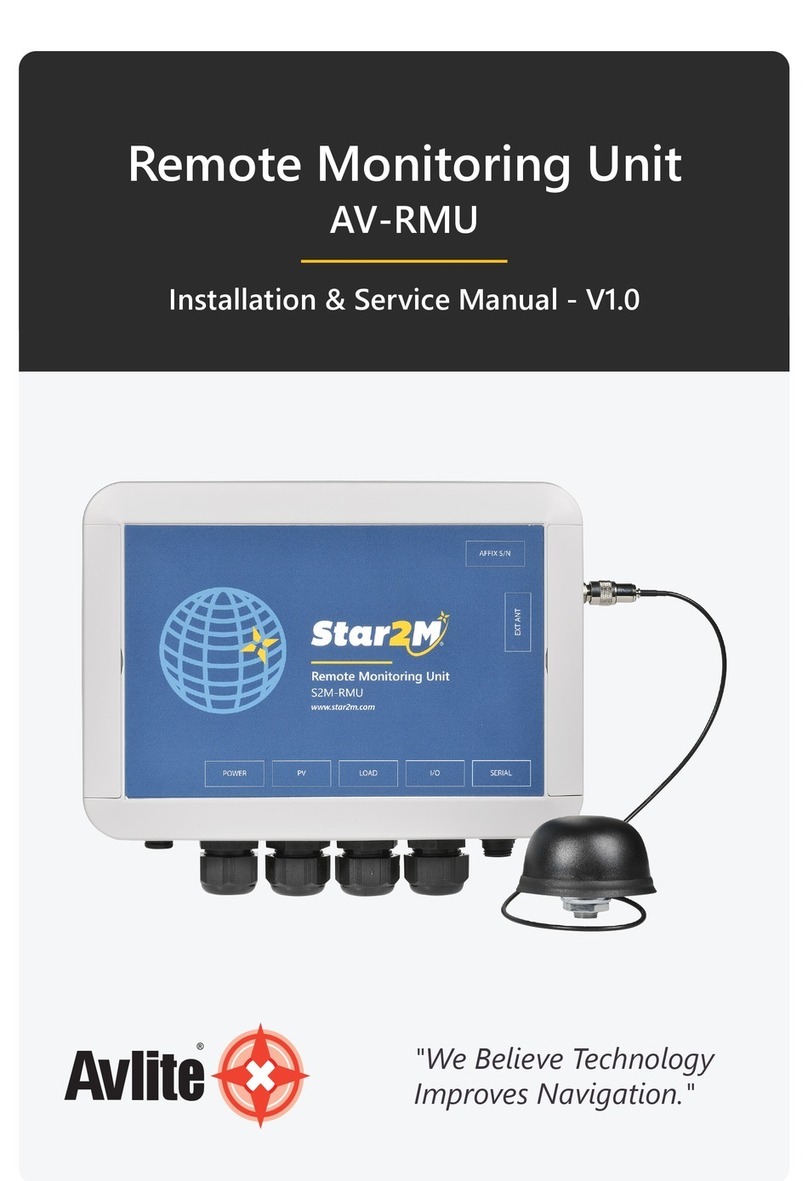
Avlite
Avlite AV-RMU Installation & service manual
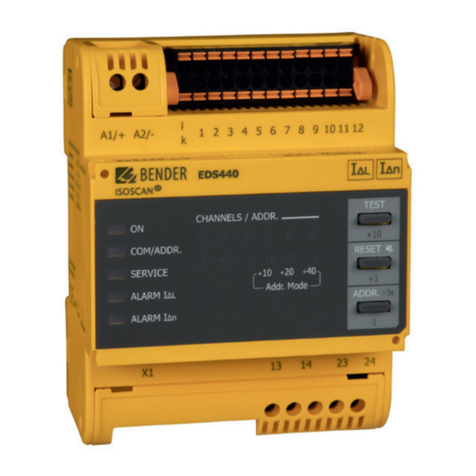
Bender
Bender EDS44-CN Series quick start guide
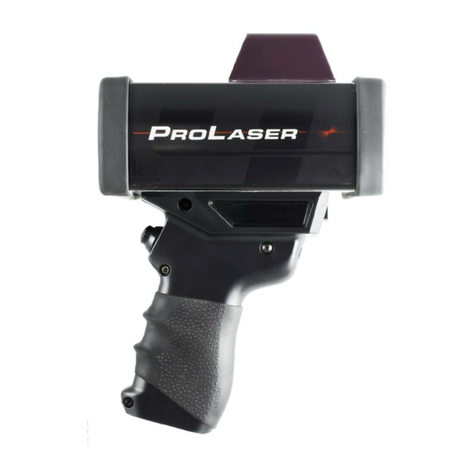
Truvelo
Truvelo ProLaser 4 Operator's manual

Hamron
Hamron 619-566 User instructions
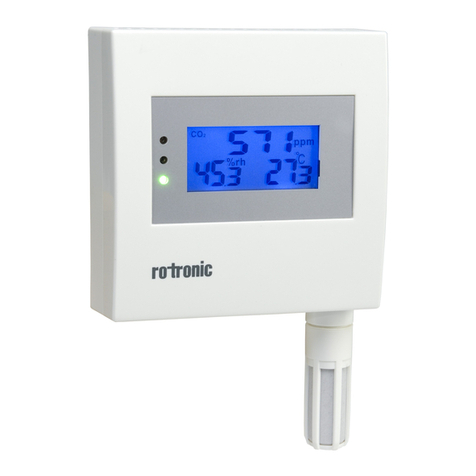
Rotronic
Rotronic CF1 Series Short instruction manual
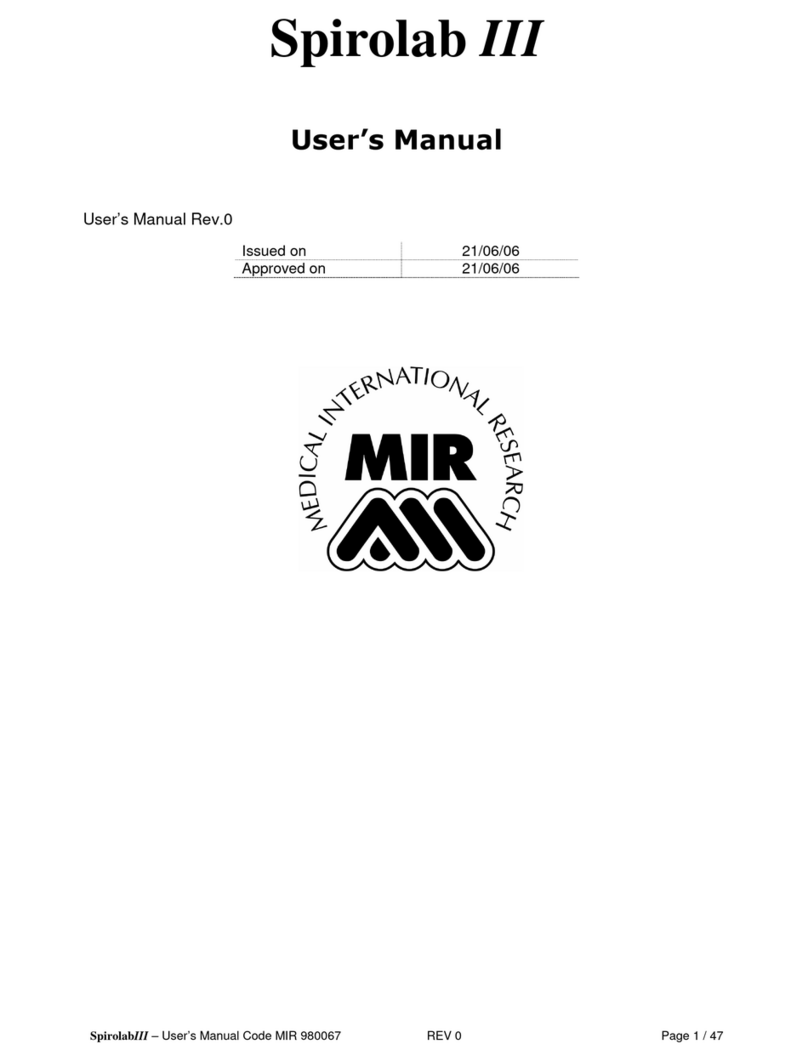
Medical International Research
Medical International Research Spirolab III user manual
